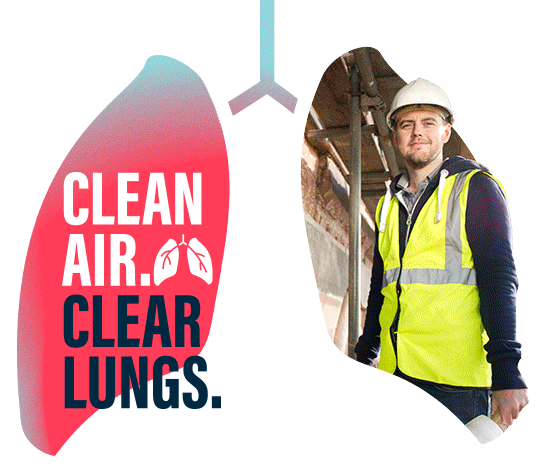建筑、制造、隧道挖掘、拆除、采矿、采石和石材加工行业的工人在工作中可能会接触到矽尘。
可能产生矽尘的工作包括:
- 制作、安装和更换人造石台面
- 挖掘、推土和钻探
- 粘土和石材加工
- 铺路和路面处理
- 采矿、采石和矿石处理
- 隧道挖掘
- 建筑劳务
- 砖、混凝土、瓷砖或石材切割;特别是采用干法切割
- 喷砂(喷砂产品的结晶二氧化硅含量不得超过 1%)
- 工厂内金属铸造
- 对混凝土或石材的角磨、冲击钻锤击和雕凿
- 天然气井和油井的水力压裂,以及
- 制陶。

雇主有法律责任通过管理矽尘的健康和安全风险来保护其员工。
员工也有法律义务在工作中合理地保护自己和他人的健康与安全。
为以下人士提供的信息:
如果您从事建筑、制造、隧道挖掘、拆除、采矿、采石或石材加工工作,您可能会在工作中接触到矽尘。
管理风险
您的雇主必须保护您和工作场所中的任何人,让大家免遭矽尘等健康和安全风险的影响。
他们必须采取控制措施,消除或减少与矽尘的接触。
控制措施可包括湿切割、使用附带除尘装置的工具、局部排气通风、隔离间和呼吸防护设备。
作为一名员工,您有责任在工作中保护自己和您周围的人。
这包括遵守工作健康和安全指示、政策和程序,从而防止吸入粉尘,并佩戴合适的呼吸防护设备。
向你的雇主了解他们正在采取哪些措施来管理您工作场所的矽尘风险。
如果您担心自己的健康与安全面临严重风险,您有权停止或拒绝工作。如果您这样做,则必须尽快通知您的雇主。
健康监测
如果您接触到、怀疑接触到或担心会接触矽尘,您的雇主必须确保您的健康能够得到监测。
健康监测由医生进行,有助于确保所采取的控制措施行之有效,并确定您的健康是否受到矽尘的影响。
您还可以获得工作健康与安全监管机构提供的健康检查和检测。
如果您是建筑、制造、隧道挖掘、拆除、采矿、采石或石材加工行业的雇主,您和您的工人可能会在工作场所接触到矽尘。
作为雇主,您必须对工作场所矽尘所带来的健康和安全风险进行管理,并尽可能减少员工和其他人员在工作场所与矽尘的接触。
对人造石采取不受控制的加工方法是明文禁止的。
管理风险
如需保护自己、工人和工作场所的其他人员不接触矽尘,就必须采用风险管理方法。您必须识别隐患、评估风险、控制风险并监督控制措施。
您有以下义务:
确定是否有矽尘产生。在切割、钻孔、抛光或研磨石材、砖块、混凝土和瓷砖等含有结晶二氧化硅的产品时,可能会产生矽尘。
控制接触矽尘的风险。 如果不能完全消除矽尘的隐患,就必须尽可能减少接触矽尘的机会。您需要采取多种控制措施。例如,使用湿切割法、使用附带除尘装置的工具、局部排气通风和呼吸防护。
进行空气监测。您必须确保控制措施是有效的,并且没有超过可吸入结晶二氧化硅的工作场所接触标准,即 0.05 毫克/立方米(8 小时时间加权平均值) 。
安排健康监测。为接触或有可能接触矽尘的员工安排健康监测。您和您的员工还可以获得工作健康与安全监管机构提供的健康检查和检测。
商讨。 与工人和任何健康与安全代表讨论矽尘的健康与安全风险,以及为管理这些风险而采取的控制措施
使用控制层级来制定您需要实施的控制措施。在大多数情况下,您需要综合使用各种控制措施,以保护员工不接触矽尘。


